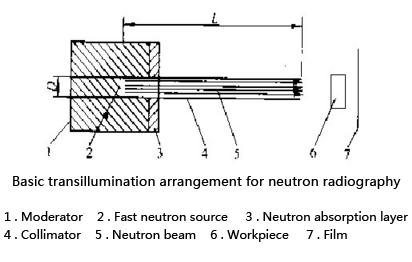Principle of neutron radiography
The basic knowledge of neutron ray house. Neutron is an uncharged elementary particle. The only difference between neutron rays and X-rays and Y-rays is that they are uncharged particle beams and have a strong ability to penetrate substances. In other respects, neutron rays are very different in nature from X-rays and Y-rays. When neutrons interact with matter, they have the following characteristics: When neutrons pass through a substance, they mainly interact with the nucleus of the substance, and have little effect on the electrons outside the nucleus. Therefore, the absorption probability of neutrons is mainly determined by the nature of the nucleus. When X-rays and Y-rays interact with substances, their attenuation increases with the atomic number of the substance. For neutrons, there is no such regularity. The two elements adjacent to the atomic number are neutrons. Absorption may vary widely, and elements with small ordinal numbers may absorb thermal neutrons more strongly than elements with larger ordinal numbers.
The neutron beam emitted by the neutron source is directed at the object being detected. Due to the absorption and scattering of the object, the energy of the neutron is attenuated, and the degree of attenuation depends on the composition of the object. A neutron beam that passes through the object is received by the image recorder to form a radiograph of the object. Thermal neutrons are most commonly used, but they cannot be made directly from the relevant reactions and must be decelerated by fast neutrons. For thermal neutrons, collimation is also required. The purpose of collimation is to limit the neutron beam divergence to the object.

The neutron itself has almost no ability to directly sensitize the film, but it can produce some secondary radiation that is easily recorded by the film. Therefore, to record neutron information on the photographic film, certain types of conversion screens must be used. The conversion screen undergoes a nuclear reaction under neutron irradiation to produce alpha particles, beta particles, and Y photons to sensitize the film. Neutron photography can be divided into two types according to different conversion methods: a direct exposure method and an indirect exposure method.

-
 Sales@hata-ndt.com
Sales@hata-ndt.com -
 0086-0371-86172891
0086-0371-86172891










